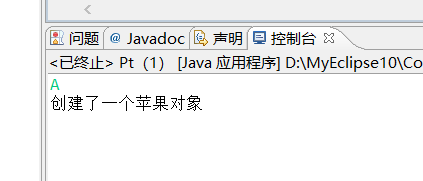Cola公司的雇员分为以下若干类:(知识点:多态) [必做
题]
• 4.1 ColaEmployee :这是所有员工总的父类,属性:员工的
姓名,员工的生日月份。方法:getSalary(int month) 根据参数
月份来确定工资,如果该月员工过生日,则公司会额外奖励
100 元。
• 4.2 SalariedEmployee : ColaEmployee 的子类,拿固定工
资的员工。属性:月薪
课后作业
• 4.3 HourlyEmployee :ColaEmployee 的子类,按小时拿工
资的员工,每月工作超出160 小时的部分按照1.5 倍工资发
放。属性:每小时的工资、每月工作的小时数
• 4.4 SalesEmployee :ColaEmployee 的子类,销售人员,
工资由月销售额和提成率决定。属性:月销售额、提成率
• 4.5 定义一个类Company,在该类中写一个方法,调用该
方法可以打印出某月某个员工的工资数额,写一个测试类
TestCompany,在main方法,把若干各种类型的员工放在一
个ColaEmployee 数组里,并单元出数组中每个员工当月的
工资。
public class Colaemployee {
protected String name;
protected int month;
public Colaemployee() {
super();
}
public Colaemployee(String name, int month) {
super();
this.name = name;
this.month = month;
}
public double getSalary(int month) {
return 0;
}
}
public class Salesemployee extends Colaemployee {
protected int monthsales;
protected double rate;
public Salesemployee() {
super();
}
public Salesemployee(String name, int month, int monthsales, double rate) {
super(name, month);
this.monthsales = monthsales;
this.rate = rate;
}
public double getSalary(int month) {
if (super.month == month) {
return monthsales * rate + 100;
} else {
return monthsales * rate;
}
}
}
public class Company {
public void getSalary(Colaemployee c, int month) {
System.out.println(c.name + "在" + month + "月的月薪为" + c.getSalary(month)
+ "元");
}
}
public class Testcompany {
/**
* @param args
*/
public static void main(String[] args) {
// TODO Auto-generated method stub
Colaemployee c1[] = { new Salariedemployee("wz", 3, 5678),
new Hourlyemployee("lcx",8, 16, 999),
new Salesemployee("zsw", 7, 6548, 2) };
for (int i = 0; i < c1.length; i++) {
new Company().getSalary(c1[i], 12);
}
}
}
public class Hourlyemployee extends Colaemployee {
protected int hourmoney;
protected int daymonth;
public Hourlyemployee() {
super();
}
public Hourlyemployee(String name, int month, int hourmoney, int daymonth) {
super(name, month);
this.hourmoney = hourmoney;
this.daymonth = daymonth;
}
public double getSalary(int month) {
if (super.month == month) {
if (daymonth > 160) {
return hourmoney * 160 + hourmoney * (daymonth - 160) * 1.5
+ 100;
} else {
return hourmoney * daymonth + 100;
}
} else {
if (daymonth > 160) {
return hourmoney * 160 + hourmoney * (daymonth - 160) * 1.5;
} else {
return hourmoney * daymonth;
}
}
}
}

课后作业
• 5、利用接口实现动态的创建对象[选做题]
• 5.1 创建4个类:
• 苹果
• 香蕉
• 葡萄
• 园丁
• 5.2 在三种水果的构造方法中打印一句话.
• 以苹果类为例
• class apple
• {
• public apple()
• {
• System.out.println(―创建了一个苹果类的对象‖);
}
• }
课后作业
• 类图如下:
• 5.3 要求从控制台输入一个字符串,根据字符串的
值来判断创建三种水果中哪个类的对象
import java.util.Scanner;
public interface Fruit {
}
class Apple implements Fruit {
public Apple() {
System.out.println("创建了一个苹果对象");
}
}
class Banana implements Fruit {
public Banana() {
System.out.println("创建了一个香蕉对象");
}
}
class Putao implements Fruit {
public Putao() {
System.out.println("创建了一个葡萄对象");
}
}
class Gardener {
public Fruit create() {
Fruit f = null;
Scanner input = new Scanner(System.in);
String name = input.next();
if (name.equals("A")) {
f = new Apple();
} else if (name.equals("B")) {
f = new Banana();
} else if (name.equals("G")) {
f = new Putao();
} else {
System.out.println("不会种");
}
return f;
}
}
public class Pt {
/**
* @param args
*/
public static void main(String[] args) {
// TODO Auto-generated method stub
Gardener g = new Gardener();
g.create();
}
}




